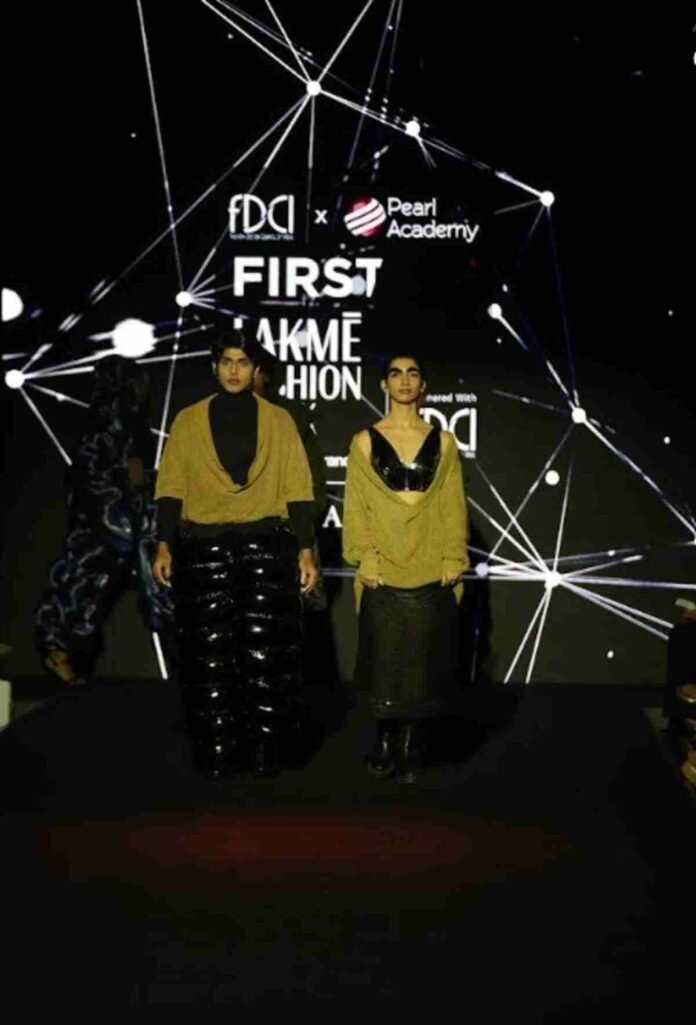India, 13th October 2025: Students from Pearl Academy, India’s leading institution for creative education, in collaboration with the Fashion Design Council of India (FDCI), brought fresh energy and bold innovation to the finale day of Lakmé Fashion Week 2025 on October 12 at The Grand, Vasant Kunj.
Taking over the runway with ‘Re–’, an all-new edition of Pearl Academy’s ‘First Cut’, the graduating students presented a bold reinterpretation of India’s most iconic textiles — jute and khadi.
Over the years, Pearl Academy has cemented its place as a key voice on India’s premier fashion stage, consistently bringing cutting-edge ideas and disruptive design thinking to the runway. This season was no exception.
Students turned their creative lens on jute and khadi, two humble yet powerful textiles woven into India’s cultural and social fabric — and completely reimagined their purpose. Once known as the “golden thread of Bengal,” jute was traditionally a coarse, utilitarian fibre. Pearl’s students stripped it back to its DNA, reworking the weave and refining the finish to transform it from rough to luxuriously soft — almost wool-like to the touch. By using less material and elevating the fibre’s feel, they turned a low-cost utility fabric into a high-value textile, reviving new commercial possibilities for jute-producing communities.
Khadi, on the other hand, demanded precision and patience. Its fragile yarns and traditional 5.5 feet saree-length format leave margin for error — one broken thread could mean starting all over again. To challenge this limitation, Pearl students collaborated with designer Jeetinder Sandhu to transform khadi into an unexpected form: the sneaker.
By translating handspun fabric into trainer-style shoes inspired by global icons like Converse and Vans, the project set out to create an Indian original — a khadi sneaker that could one day become as iconic as its Western counterparts. The smaller canvas demanded exacting skill in weaving and finishing, while the process itself minimised waste and pushed artisans toward new levels of craftsmanship.
Together, these explorations went beyond nostalgia. They embodied a radical reinvention — a material-led experiment that elevated craft, generated economic value, and demonstrated how design thinking can transform traditional textiles into future-forward fashion. At a time when global fashion is re-examining its relationship with materials, waste, and longevity, Pearl’s choice to spotlight jute and khadi felt particularly prescient. Both fabrics — deeply rooted in India’s identity — were reborn in a modern, sustainable narrative that speaks to conscious consumption and contemporary aesthetics.
“The presentation unfolded through three acts: Revisit, Reform, and Reinvent. Revisit explored the past through a modern lens and the re-visitation of PT shoes. Reform reframed fashion as a tool of protest to address today’s urgencies like climate change; and Reinvent celebrated renewal — giving jute fresh life through futuristic silhouettes, refined textures, and bold experimentation,” said Aditi Srivastava, President, Pearl Academy.
With this edition, Pearl Academy once again reaffirmed its role as a launchpad for India’s next generation of fashion innovators — creators who respect heritage, embrace sustainability, and bring bold, contemporary Indian perspectives to the global stage.


